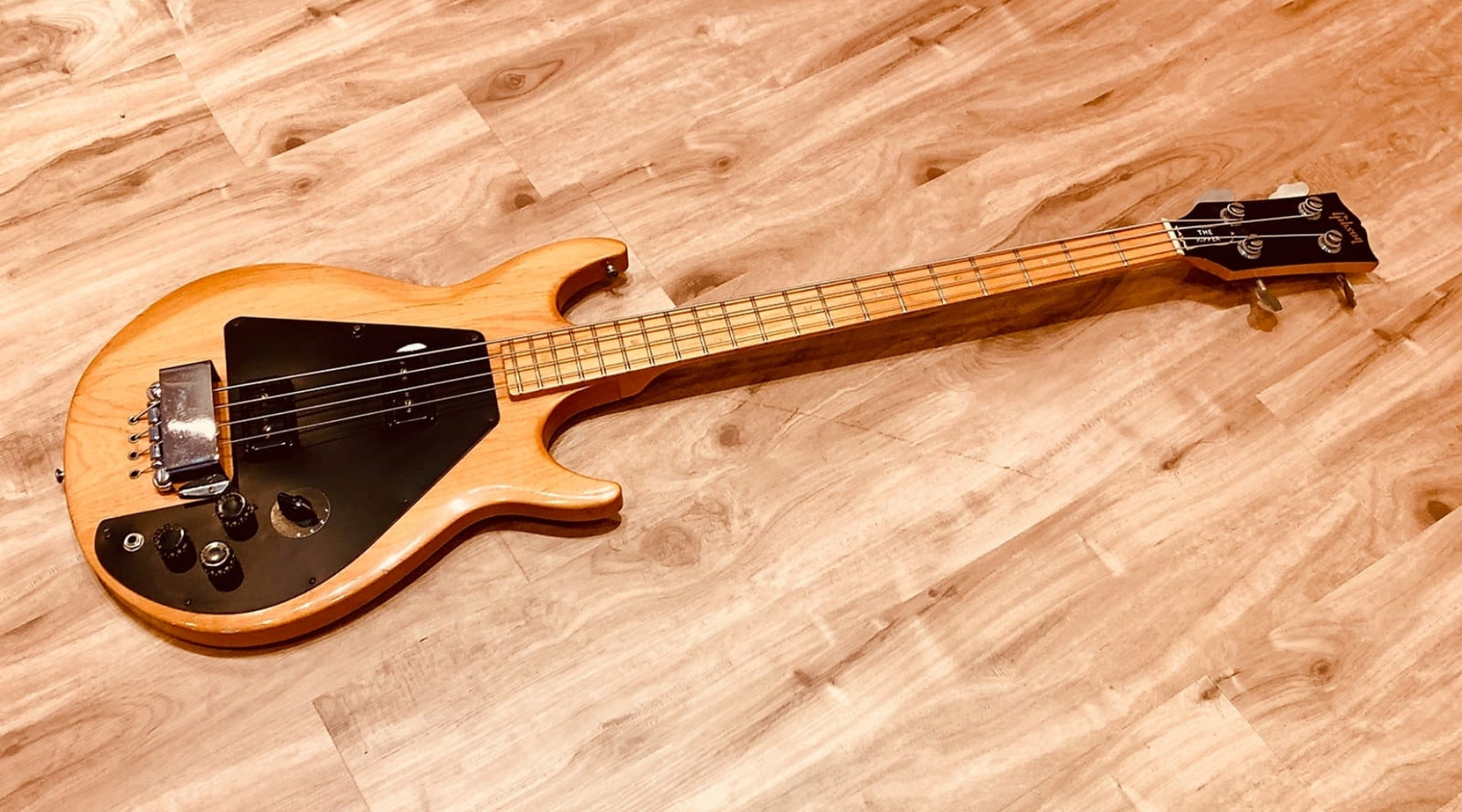Gibson Oddities: The Ripper and Grabber

If you know your guitar history, you’ll know that the seventies were trying times for the big instrument manufacturers. In the ‘50s and ‘60s, Gibson and Fender scored innovation after innovation and revolutionized the marketplace in the process. But, by the turn of the decade, things were different. Often described as the “downer decade,” it was an era in which both companies struggled with quality control issues and released instruments that failed to captivate the guitar buying public like their previous offerings.
To see that, you’ve only got to look at the Ripper and Grabber, two of Gibson’s bass guitar offerings from the mid-1970s that – in spite of a handful of high-profile endorsees – failed to ignite the interests of the guitar buying public.
Released in 1973, the Ripper and the Grabber were – like much of Gibson’s output at the time – produced with the budget end of the guitar market in mind. As Bass Guitar Magazine put it, they were “modest options in terms of looks, available in limited colour options with no decorative inlays and controls and pickups mounted on the scratch-plate.”
With their offset horns, the Ripper and Grabber looked like a sort of hybrid between Gibson’s SG and Fender’s P-Bass. Like the P-Bass, and unusually for Gibson, the Grabber featured a bolt on neck.
The Ripper and the Grabber weren’t too much to look at. But then, looks weren’t the instruments’ unique selling point. As Andy Baxter notes, it was the electrics, and specifically the distinctive Bill Lawrence pickups where these basses shined:
“Bill Lawrence designed the pickups for both basses. The Grabber had a distinctive adjustable pickup, which provided plenty of tonal variation. Later, The Gibson Grabber G3 was introduced, which featured three (non-adjustable) single coil pickups mounted in the neck, bridge and middle positions. Its three-way switch meant that the pickups could be activated as neck & middle, bridge & middle, or all three at once. The Ripper came equipped with two humbucker pickups, known as "Super Humbuckers", a four-way pickup selector control and a passive midrange control, making it an extremely versatile bass with an tremendous amount of clarity, which wasn’t generally something Gibson basses were known for.”

Gibson led with the pickups in their promotional materials for the instruments as well. A 1973 add for The Ripper – “Designed to rip your ears off!” according to the byline – emphasized bass’s multitude of sonic possibilities:
“Gibson’s astonishing new Ripper bass – stay in the rhythm section or steal the show the show. Because The Ripper gives you a variety of sounds that come off like many basses. Or like no bass you ever heard before. The choice is yours.”
You see, our new Ripper Pickups were designed to give you the broadest possible range of adjustment possible. And as much power as you’ll ever need. They were designed for The Ripper and only The Ripper has them.”
The Ripper and the Grabber found a few notable users in the 1970s. Mel Schacher of Grand Funk Railroad was an early adopter, while Rick Danko of the Band brought increased exposure to the instrument when it featured in legendary concert film “The Last Waltz” in 1978. Gene Simmons too was synonymous with the basses, using Rippers on tour with KISS at various points throughout the 1970s and appearing with a Grabber on the now-iconic cover to 1975’s “Alive!”
However, in spite of these high-profile endorsees, neither the Ripper nor the Grabber managed to grab the bass-buying market. By 1983, Gibson ceased manufacturing them.
While the Ripper and the Grabber were short-lived, they didn’t disappear from the limelight entirely. In the 1990s, a new generation of bass players including Nirvana’s Krist Novoselic, Green Day’s Mike Dirnt and Weezer’s Matt Sharp brought the forgotten instrument back into the public eye. For those musicians, the Ripper and the Grabber were dream pawnshop finds – solid, good-sounding instruments that wouldn’t break the bank.
These days, thanks to this resurgence, a used Ripper or Grabber will cost you a fair bit more than it did in the 1990s. And, but for a brief flirtation with the so-called “Ripper II” and “Grabber II” in 2009, Gibson has never put the instruments back into production.
Did you ever play a Ripper or Grabber? If Gibson manufactured them again, would you want to buy one? Share your stories in the comments.





















